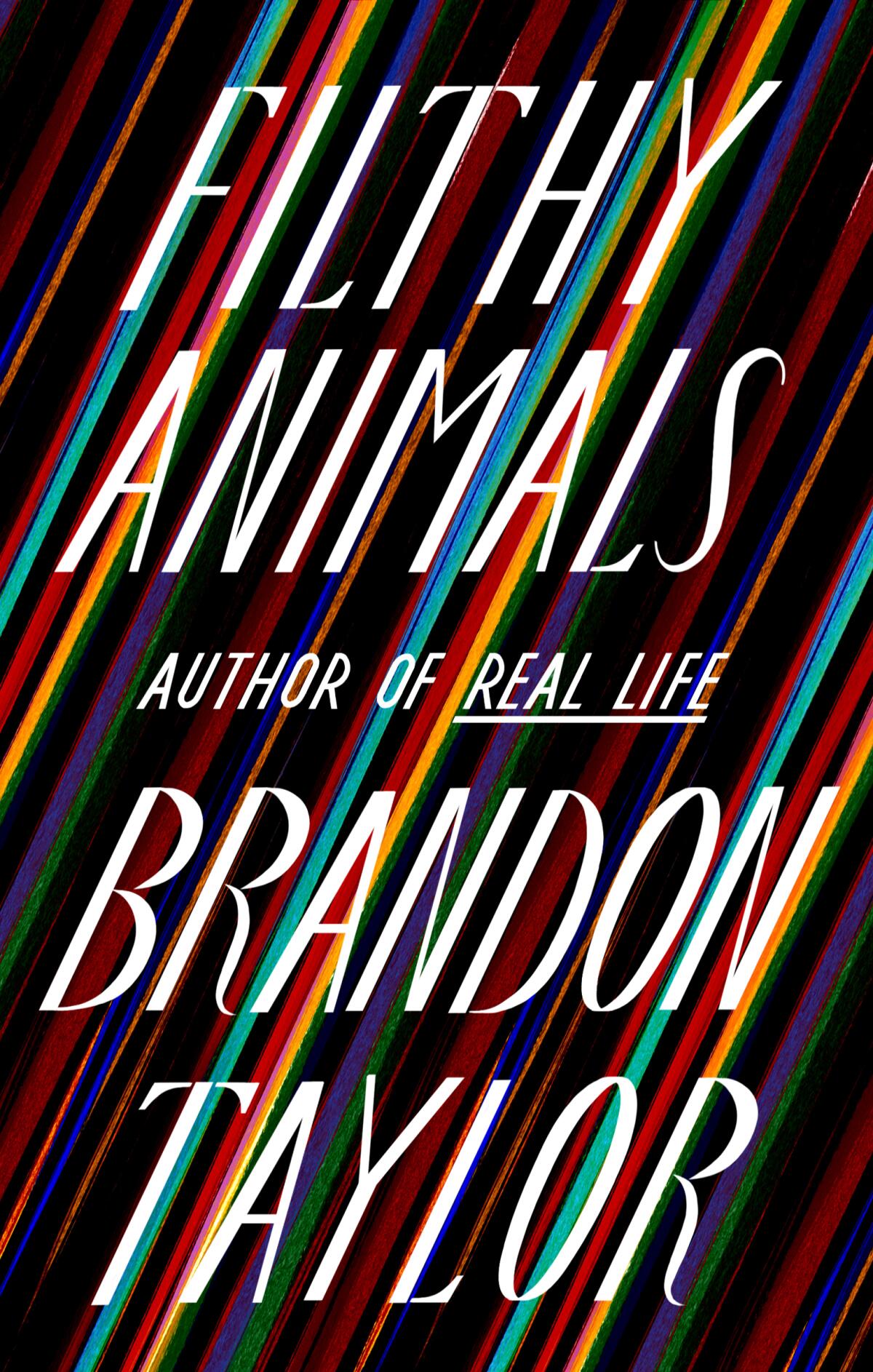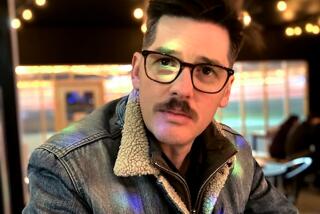Review: ‘Filthy Animals,’ piercing stories about learning to love, by Brandon Taylor

On the Shelf
Filthy Animals
By Brandon Taylor
Riverhead: 288 pages, $26
If you buy books linked on our site, The Times may earn a commission from Bookshop.org, whose fees support independent bookstores.
Last year, reviewing Brandon Taylor’s Booker Prize-shortlisted debut novel, “Real Life,” I mentioned the protagonist’s “emotional distance” becoming “the fulcrum of the plot.”
In Taylor’s stunning new story collection, “Filthy Animals,” several characters still experience that kind of distance — particularly one who appears in many of the stories, a young Black man named Lionel who lives a sort of university-adjacent life in the Midwest. After dropping out of his graduate studies in pure math, he proctors exams and tries to overcome his social anxiety by going to the occasional grad-student party.
What’s changed in Taylor’s work is not his subjects but his style. These 11 stories still involve life in and around academia, as “Real Life” did, with all its attendant types and even, at times, archetypes: sloppy, exhausted dance majors; cultural-studies grad students dating townies; the nearly invisible roommates who spend all their time in a chemistry lab.
Now, however, Taylor seems to have taken the immediacy that has always marked his nonfiction writing (in essays on subjects ranging from Joan Didion and Serena Williams to his childhood abuser) and applied it to his imaginary characters. As individuals, they often have trouble connecting with others, but as fictional entities, they pulse and glow on the page.
Brandon Taylor’s debut novel echoes James Baldwin
Lionel (and his friends Charles and Sophie, who also appear in several stories) has intense physicality: the ugly, knotted keloid scars on his left forearm from an earlier attempt to kill himself, the “nappy and disheveled” locks on his head and the “wiry” hair in his groin. Sophie’s feet are “hard and calloused, bruised,” and so on. Meanwhile, Charles — who we all know is handsome — will experience a physical transformation in the final story, “Meat,” that makes his full complexity more visible to Lionel.
Visibility matters to Taylor, as a Black man and as a queer man. Like the superb writers with whom he keeps literary company — Garth Greenwell, Carmen Maria Machado, Akwaeke Emezi, Kristen Arnett — he understands that it is no longer enough to merely allude to sexuality. If LGBTQ people are to be fully seen, they need to be seen in every way we normally see cishet people. That doesn’t mean writing gratuitous sex scenes, and none of Taylor’s could be called that. Quite the opposite — these moments offer careful insight into vulnerabilities. When a woman named Marta feels her lover Sigrid’s kiss for the first time, “She’d cried because she’d expected it to be awful and it hadn’t been.” Readers don’t feel the kiss. We feel her loneliness.
But Taylor also understands that if we don’t know that Sigrid later puts her fingers inside Marta, that Lionel experiences “an awful heat” when Charles enters him or that two adolescents can simultaneously arouse and enrage each other during a late-night hand job, then we’re looking away, retreating to safety. In the second half of “Real Life,” the author seemed to break through the scrim between himself and what he wanted to describe. In “Filthy Animals,” there is no scrim; each story has a cinematic quality that is wholly earned and not derived from thinking, as authors sometimes seem to do, “I can’t wait to write the screenplay.”

One of the most affecting stories, “What Made Them Made You,” isn’t explicit about sex or the body at all. Grace has a tumor, unspecified, but we know her condition is serious; she’s being taken to treatments by her mother, Enid, and can hardly sit up on her own. We learn much more over the course of a meager lunch prepared by Grace’s father, Big Davis (“the roast portion is tiny, miniscule”): the terrifying fights between the parents that Grace and her brother, Davis Jr., had endured growing up; the permanent split caused by the younger Davis’ coming out as gay; also, possibly, what it’s like to leave this world.
Paul Lisicky’s memoir “Later” encapsulates a quarter-century of queer life
The story showcases what I find most remarkable about “Filthy Animals”: Each of Taylor’s pieces is emotionally rich but also physically grounded. His writing is fine without being enigmatic. There are dirty dishes, cruel remarks and messy orgasms, but nothing elusive or precious. Taylor, a former doctoral candidate in biochemistry who is once and ever a scientist as well as an artist, trusts facts to tether feelings. The soiled jeans a character wears in the title story signal that, yes, he was out in the woods getting into trouble. Lionel only has hair clippers because keeping razors in the house makes him nervous. Selfish Sophie serves herself fish but doesn’t offer it to anyone else.
Deep observation combined with deep compassion keeps readers focused on real lives even in the midst of chaos, rage or disaster. The end of “Mass,” about a dance student named Alek, is hard and sad and also true to what we’ve learned about him and his Russian American family. In some part of his life, Brandon Taylor may tell lies, but he doesn’t do it in his fiction.
One last note for now until we meet Taylor again: His compassion is wrapped around a core of violence. Several of the stories involve characters that hunt, fish and trap, and here’s what one named Hartjes says of his hounds:
“[He] had loved them enough to teach them how to fight, how to maim, how to kill, and the people here, in this place, let their dogs sleep in their beds, as though that were love.”
What’s filthy isn’t what we do in bed or what we hunt and kill for sustenance. What’s filthy is pretending we are invulnerable. “Filthy Animals” allows its characters to crawl out into the open and learn to love.
In a guest column for The Times, author and “Law & Order” fan Carmen Maria Machado explains what makes the characters more powerful together than alone.
Patrick is a freelance critic who tweets @TheBookMaven.
More to Read
Sign up for our Book Club newsletter
Get the latest news, events and more from the Los Angeles Times Book Club, and help us get L.A. reading and talking.
You may occasionally receive promotional content from the Los Angeles Times.








